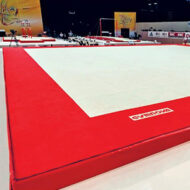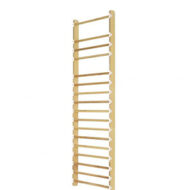Backward bridge
How to teach backward bridge on floor



Angelo Ritorto
Backward bridge
How to teach backward bridge on floor
description
In this training, you will learn how to teach a backward bridge on floor. This is one of the foundational elements for artistic gymnastics. It serves as a prerequisite for a number of acrobatic elements based on a backward inversion, like flic-flac or back walkover.
In the first video, we'll look at the physical and technical prerequisites necessary for learning this movement. In the second, we'll look at this skill purely from the perspective of technique. First of all, by examining the general principle of the movement, where you'll see that the idea of balance is omnipresent. Then we'll go into detail on each of the different phases of the movement.
The two final videos will be dedicated to the skill progression, with multiple set-ups to gradually and safely learn the backward bridge.
We hope you enjoy the training.
Associated books
Let's Teach Artistic Gymnastics - Floor Skills - Volume 1
Learn how to teach:
• Shoulder stand • Forward and backward rolls • Handstand • Forward lunge • Bridges •
All the exercises needed to learn these technical elements, from their beginnings to the execution of complete skills
→ 219 exercises - 184 pages - Format 15 x 21 cm -
A note on the series of books, "Let's teach gymnastics":
• Our books are essential companions to the video training on the same topics that you find in the section "Gymnastics Education" here on GymneoTV.
• Their spiral binding and tabbed pages allow you to quickly find the skills you want to look at, and easily locate the drills and training stations.
• The summaries of technique and the large format illustrations made to scale make these books the ideal companions to your training sessions.
Our advice:
• For training session prep: thanks to the technique summary and icons at the top of each page, you can easily find the stations that match the current needs of your gymnasts. You can also anticipate the equipment needs for your upcoming session.
• During training: with the help of realistic images, you can save time by showing your gymnasts the drills to work on. They will also be able to help you set up the training stations and thanks to the illustrations, they'll more easily understand the task at hand.
• You will improve the constant exchange that you have with your athletes. In fact, when giving your instructions, the illustrations create common ground for discussions or reference points. They make it easy to understand and/or visualize technical placements, which makes it much easier to learn the element.













